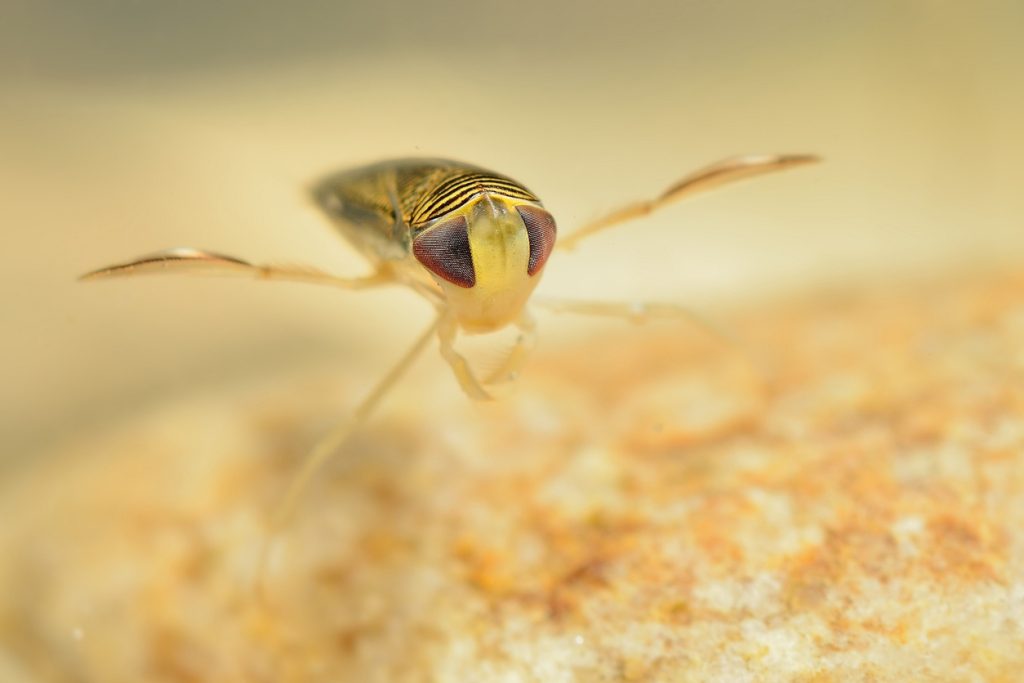
The water boatman (Sigara lateralis) captured under water. The water-dwelling insect close up on the stone.
Pests That Can Survive In Water
Water is a difficult environment for most animals, but some infuriating pests have developed astonishing adaptations to thrive in moisture. Water bugs and similar critters are known for entering homes during rainy seasons or in humid locations, creating lots of potential headaches for the average homeowner. Such resilient invaders require a better understanding of their control and prevention.
Many property owners battle regular infestations even when they do all they can to avoid them, often because they are unaware of these pests’ resilience in moist environments. However, when normal techniques fail, you can call Naperville Exterminator Services to provide you with focused approaches that take care of not only the existing infestation but also any water-related entry points that could be luring these pesky guests in.
7 Pests That Can Survive In Water
Mosquitoes
Mosquitoes are perhaps the most infamous of the water-hardy pests. They need stagnant water to grow, and females lay eggs directly on the water. The eggs grow into larvae (wigglers) that dwell underwater and breathe using specialized tubes. Mosquito larvae can grow in as little as one tablespoon of water, making them very well adapted to all kinds of water. They can breed in falling rain gutters, bird baths, stagnant swimming pools, and even a bottle top of standing rainwater.
Cockroaches
Some species of cockroaches can survive in water for long periods of time. The American cockroach can actually survive being submerged underwater for as long as 30 minutes by entering into a state of suspended animation. German cockroaches, which are found commonly in homes, can survive without air for around 40 minutes. They can even float on water. Cockroaches can survive floating on water surfaces because of the water-repellent emollients (waxes) secreted by their exoskeletons. These adaptations make cockroaches especially troublesome in basements and bathrooms that flood.
Water Bugs
True water bugs, such as giant water bugs and water boatmen, are fully aquatic insects that live their entire lives in the water. They have specialized breathing tubes or air stores to stay underwater long. These bugs usually live in ponds, lakes, and slow-moving streams but can sometimes end up in swimming pools and decorative water features in homes.
Termites
Although termites are not water-based organisms, some species demonstrate an impressive resistance to water. To enable them to crawl from the ground, subterranean termites build mud tubes over surfaces so they do not dry out. They can sense water sources from long distances away, and studies show they can survive working in waterlogged soil for days. They often thrive in water-damaged wood, so it is important to create proper drainage around foundations to prevent infestations.
Carpenter Ants
They do not swim, but carpenter ants are highly attracted to wood with moisture damage. Unlike termites, they do not eat wood at all but rather hollow out galleries in which to nest. They can form satellite colonies in moist parts of households, such as around leaky pipes, in bathrooms, or in water-damaged structural wood. Pest control statistics reveal that carpenter ant infestations grow by roughly 25% after extremely wet seasons.
Drain Flies
These small, moth-like flies infest the organic matter that builds up in drains, sewage systems, and septic tanks. Their larvae can exist in the slimy biofilm that forms in these soggy conditions. Adult drain flies cannot fly well, but they tend to swarm out of drains during optimal conditions. They tend to be more common in bathrooms and kitchens that have plumbing problems or drains that are infrequently used.
Water Mites
These small arachnids are entirely aquatic for their entire life cycle. Water mites can live in many freshwater environments and are sometimes pests in poorly maintained aquariums, water features, and rain barrels. Some are parasitic on aquatic insects. Others prey on microorganisms. Because of their small size (usually less than 5mm), they are hard to find until it is already late with large existing populations.
